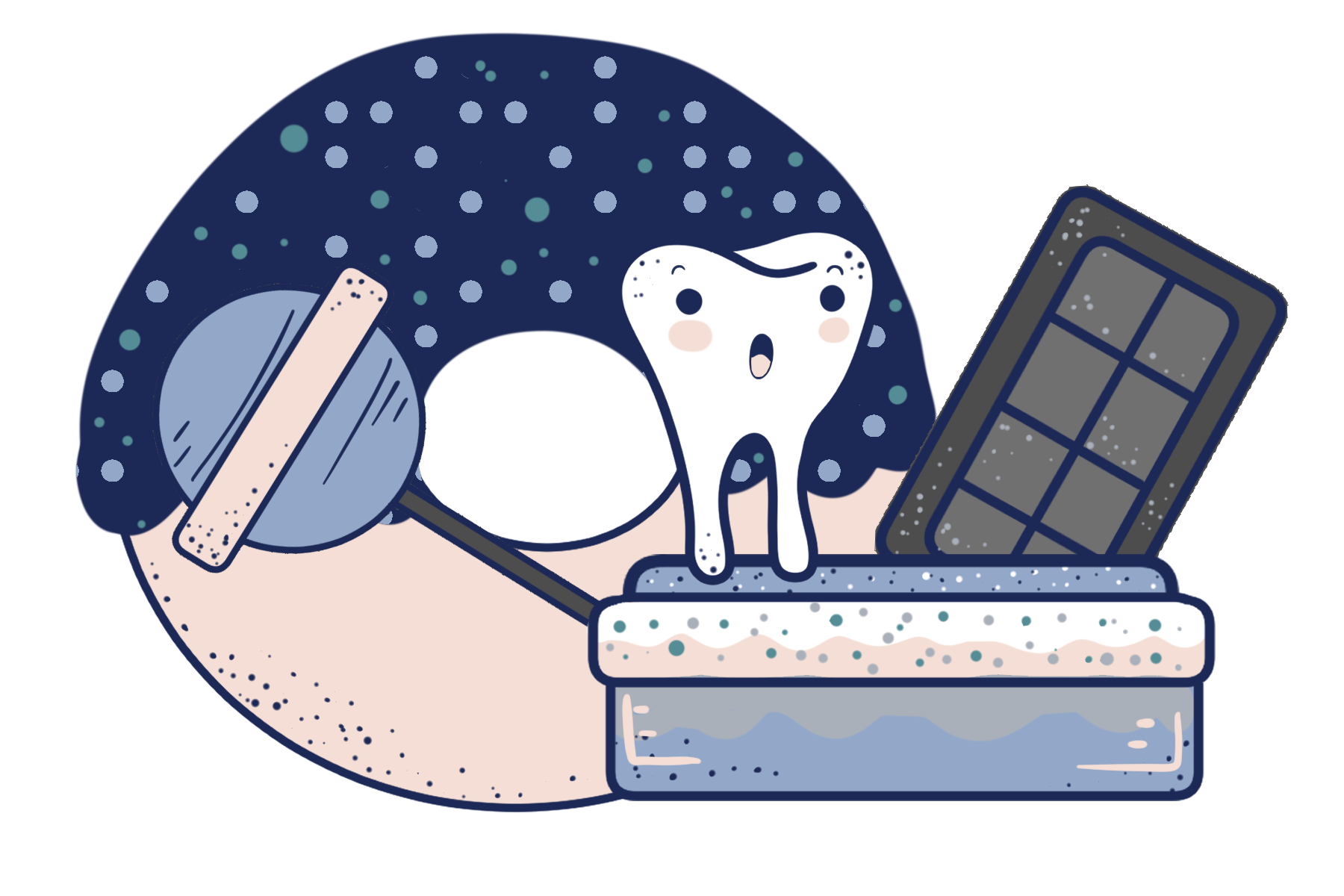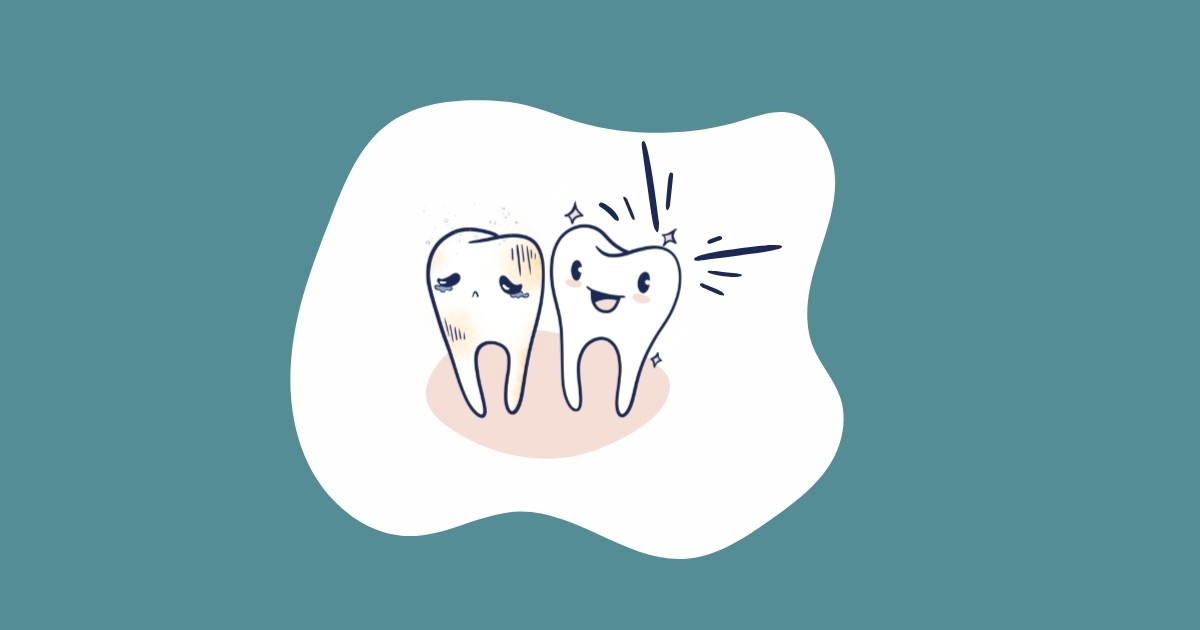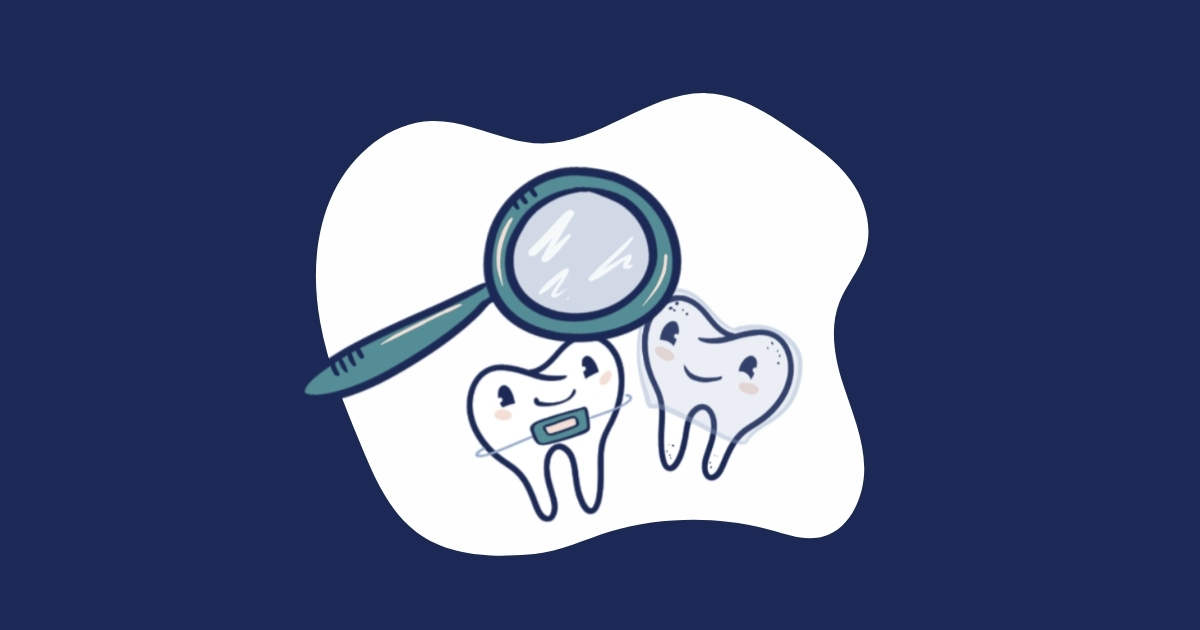“Don’t eat that! The sugar will rot your teeth!”
We have all heard that phrase at some time in our lives, especially when we were kids about to indulge in a sweet treat. As adults, we may continue to hear that voice as we consider our dental health. We know that overconsumption of sugar can contribute to several health issues. Furthermore, it is often blamed as the single culprit in cavity formation. But is it actually true that sugar alone causes tooth decay and cavities? Will your teeth rot simply from eating one too many hard candies? Let’s dive deeper to discover what causes cavities and the links between sugar, tooth decay, and demineralization.

How Does Sugar Cause Cavities?
First things first, sugar itself is not the direct cause of cavities. But, it does contribute to cavity formation when it’s allowed to stay on your teeth. Sugar provides plentiful food for the bacteria that hang out in the plaque on your teeth. The sticky, thin film of plaque builds up on teeth daily, creating a welcoming atmosphere for bacteria to thrive. When sugar interacts with the bacteria, it produces acid. That acid eats away at your tooth enamel.
More acid is produced depending on the consistency and length of time sugar interacts with the bacteria. That causes more damage over time. Enjoying a slice of sugary cake won’t cause your teeth to rot right away. But, enjoying many slices of sugary cake over time without following up with thorough tooth-brushing and dental care to slow acid production will cause tooth decay and eventually cavities. And that leads us to the subject of tooth demineralization.
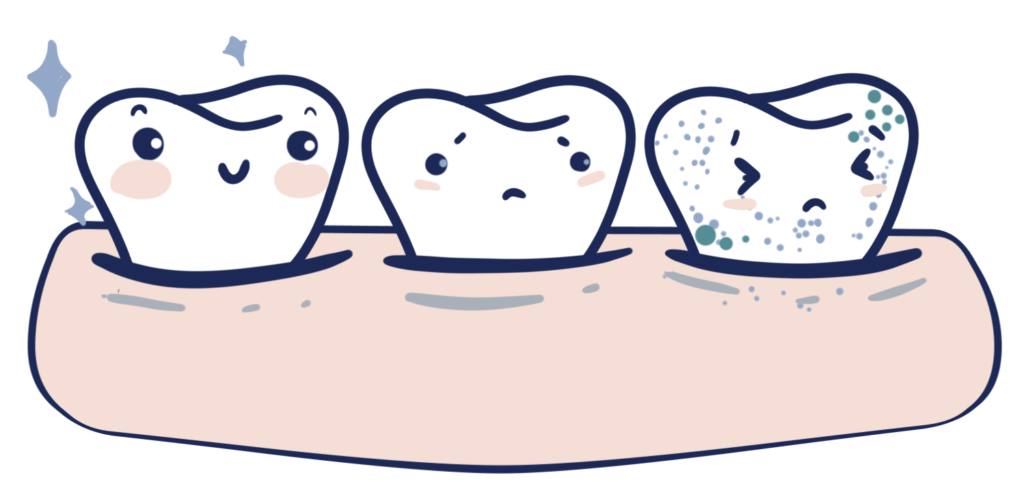
What Causes Tooth Demineralization?
Minerals like calcium and phosphate make up the hard, protective enamel on your teeth. When sugar interacts with bacteria to create acid, it starts to break down those minerals. Demineralization leaves the enamel vulnerable to decay. Teeth are demineralized daily through eating, drinking, and medical conditions like acid reflux. Luckily, a daily remineralization process occurs naturally through saliva. Your saliva works to neutralize the acid by forming a protective layer on your teeth. That layer allows calcium and phosphate time to rebuild. Additionally, remineralization can be supported by chewing sugarless gum to encourage saliva production and brushing your teeth with fluoride toothpaste after eating.
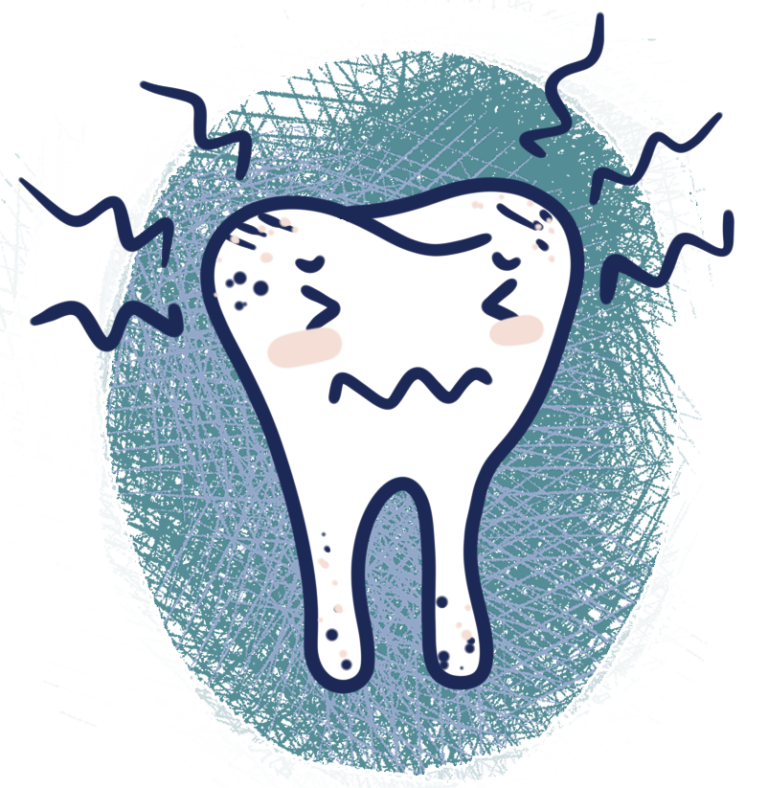
Demineralization and Cavities
Long-term demineralization leads to enamel decay. When the enamel decays, the dentin (or interior of the tooth) becomes more likely to decay, leading to cavities. However, it is possible to experience demineralization without cavities forming. Excessive acid in your diet from sodas, other foods, and drinks, or acid reflux can cause an overall softening of tooth enamel. But, that may not wear away enough to make a cavity. Demineralization from soda and other acidic drinks usually affects teeth toward the front of your mouth, whereas acid from reflux tends to affect the back teeth. Softened enamel can be strengthened with fluoride to prevent cavities. But if left untreated, weakened enamel is likely to erode further. That’s why maintaining strong, healthy tooth enamel is so important to your overall dental health.

How to Prevent Cavities with a Sweet Tooth
Giving up sugar altogether to avoid tooth decay is a lot to ask if you have a sweet tooth. Instead, you can take steps to prevent cavities by managing your oral health while still enjoying some of your favorite sweet treats.
First, think about the type of sugar you’re eating. Because chocolate dissolves faster than sweets like hard candies, your teeth are exposed to it for less time. That makes chocolate one of the “better” sweets for your teeth. However, you should drink some water or brush after eating chocolate to wash away the residue. If you’re concerned that you’re not getting enough minerals in your diet to help with tooth remineralization, consider taking a calcium supplement or upping your intake of mineral-rich foods like dark leafy greens.
LifeSavers, suckers, and mints take time to dissolve, leaving more sugar behind. If you suck on candies with sugar in them throughout the day, try to break that habit. Mints and gum with sugar in them may seem to freshen your breath. But in the long run, they contribute to bad breath because they feed bacteria. Instead, try sugar-free options containing xylitol. Xylitol, a naturally occurring alcohol found in plant material, does not convert to acid in the mouth as sugar does. It can help reduce the levels of bacteria in saliva, too. But be careful with xylitol products around your four-legged friends, as it can be toxic to dogs even in small amounts.
Gummy candies and Oreos get stuck between and in the grooves of your teeth where bacteria thrive. First, use your tongue to loosen residue from your teeth. Then, drink water to help rinse it away. Finally, floss and brush your teeth and tongue with fluoride toothpaste after eating.
Caring for your teeth and enjoying sugary treats don’t have to be separate activities. If you’re mindful of how sugar contributes to tooth demineralization and decay, you can easily maintain good dental health.
Daily brushing with fluoride toothpaste, flossing, switching to sugar-free gum and mints, and taking mineral supplements can all help prevent cavities. Routine cleaning and occasional deep cleaning at Bass Dentistry are also excellent ways to ensure your teeth are at their best. We’re here to help patients of all ages stay healthy and cavity-free!
Healthy Gums,
Healthy Life
If dental health is important to you and your family, take steps to know how to keep your gums healthy. Gum health is essential to maintaining healthy teeth and overall good dental hygiene. Brush and floss multiple times per day, avoid tobacco products, and use a therapeutic mouthwash.
If you want to know more about maintaining a healthy smile, book an appointment today with Bass Dentistry.

